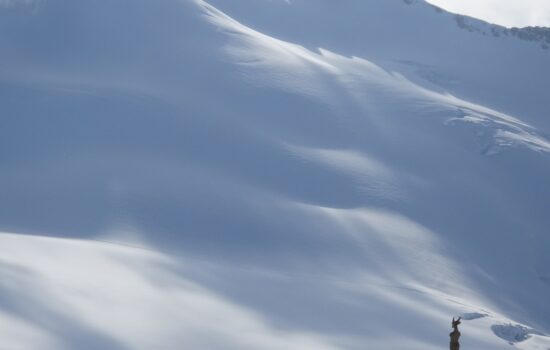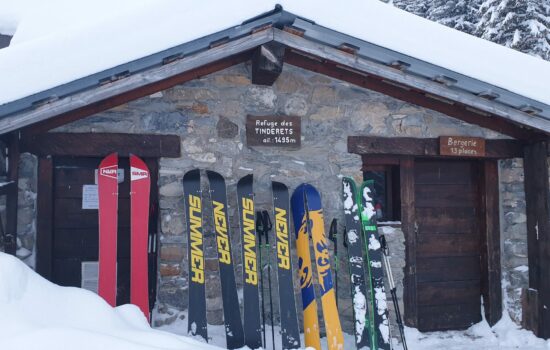A Few Things To Consider For The First Time Splitboarder
There are no lifts open, the snow is falling and everyone wants to go riding. In the times of Covid-19 getting your fix of face-shots is realistically going to take some effort this winter. We already know that ski-touring equipment is selling like hotcakes & likewise the interest in splitboarding has boomed again but if you’re new to the discipline then where do you start? How do you work out what is going to be the best set up for you?
Every season a a bunch of ‘Best Splitboards For‘ (insert that particular season) crop up. You can find good, in-depth reviews on different types of splitboard where, crucially, the reviewer has actually used the things. Splitboard Magazine was a good publisher of this type of review but their stuff is sadly becoming rarer due to the fact they do it for the love and not the money – chuck Covid in the mix and its bound to of gone a bit quiet.
Leaping in to fill this void are those publishers who only seem to cover the same particular brands year in year out with no real insight given as to why the boards make their ‘Best Splitboard’ list. Advertiser $$ spring to mind coz you’ll rarely ever see the likes of Pogo or perhaps Prior in their list – to name just a couple of the excellent brands who’ve been producing real quality splitboards for many years now.
It’s a big investment and there are very few opportunities to test kit out. In the good old days a trip to your local core, independent snowboard shop to have a chat with someone who fully understands the pro’s & con’s of the things they’re selling would of started you off, literally, on the right foot by ensuring that you had bought a set-up that was ideal for the type of splitboarding you were looking to do.
Sadly, access to many of these kind of shops is difficult these days due to Covid or perhaps you just don’t have a good store in your immediate area anymore (they are a dying breed so try to support them wherever possible). As a result most folk head off to the all knowing Internet for their info.
There are a bunch of online forums and Facebook groups around that are dedicated to all things splitboard. Their users are usually all too happy to impart pearls of wisdom on particular products which can be helpful. However, we are seeing more and more posts from people who haven’t splitboarded before who have either gone and bought a new set-up or are about to do so but want to know if its going to be any good first.
The answers can vary wildly between the opinions of fanboys, experienced splitters and those with little actual experience in the skin track. Cutting through this ‘noise’ in the comments section to glean the most salient information can be difficult & it is a far from ideal situation when you are about to drop around 1800e (& upwards) on a new toy.
The fact of the matter is that it’s hard to buy a really bad splitboard. However, finding the one that is right for and that will grow with you as you progress requires a little bit of thought. Ask yourself what you’ll be (or what you hope to be) riding in and where. How often are you going to go? What altitudes? In what months? Will you be solo or guided? When you can answer those, that’s when you should start considering what’s strapped to your feet.
In our humble opinion its mainly about the ascent. This is where many the ‘Best Splitboard’ lists ultimately fail as all they generally talk about is the ride characteristics of what they’re trying to sell you. The rarely told truth about splitboarding is that it isn’t an automatic ticket to fields of waist-deep untracked powder. You’ll need to get to those fields or faces first and unless you live in or around the mountains you’ll not always know how to best get to them. You might luck out and find the goods easily but more often than not it’ll involve quite a lot of skinning on many different types of snow and on terrain of varying steepness.
So if you’ve gone out and bought a shiny new set-up with a huge old rocker underfoot you will very quickly find out that life can be hard in the skin track. The rocker / hybrid boards are super nice to split with IF you have great snow. In Japan they work, in North America where they rock up on sleds to a backcountry bowl filled with powder these profiles also work well as you’ll generally be in nice soft snow on the way up.
However, bring it to the Alps and you’ll quite likely watch in horror as it your ski spins like a compass underfoot whilst putting in a kick turn in on icy compact snow due to it having so little grip due to the rocker. A long icy traverse can become an exhausting terror-fest too, and that’s just at resort level….
Now don’t get us wrong as you can manage just fine with boards like this IF you have a great skinning technique and a set of excellent splitboard crampons. However, to acquire that good technique takes an awful lot of time and effort in the skintrack.
So if you’re coming to the Alps and are looking to use it for more than skinning up a piste, we wholeheartedly suggest you look at buying a camber splitboard. A regular camber splitboard offers a greater effective edge which makes for fabulous grip and a less exhausting (and quite possibly terrifying) time on the ascent.
You’ll also appreciate a regular camber on those steeper descents where a hybrid profile can easily slip out on a jump turn. A little rocker in the nose is cool though as it’ll help you float in those endless fields of powder you’re going to find 🙂
Your boots and bindings are also important considerations. If you intend to use it a lot then that 10 year old pair of 32’s that are oh so comfy, if a little spongy, are going to see you slipping out on traverses and kick-turns like Bambi on ice. A boot with a good lateral stiffness will help more than you’ll know. There are a bunch of splitboard specific hard & soft boots out there to choose from – we tend to use the Fitwell Backcountry ourselves as they are pretty much bombproof. However, they aren’t for the faint of heart and can take A LOT of breaking in.
A set of splitboard specific bindings are also going to elevate the experience. Spark & Karakoram are the main players but you can find other good choices such as Plum out there.
Sorry if this wasn’t the list of splitboards you were hoping for but we hope it’s some useful info nonetheless. If you have any questions about kit then do feel free to drop us a message and we’ll answer it truthfully from experience gained in the field.
In the meantime ENJOY your new found freedom, take a guide if you don’t know where you’re going and ride safe. See you in the skintrack sometime maybe.
Oh, and #supportindependentsnowboardstores


